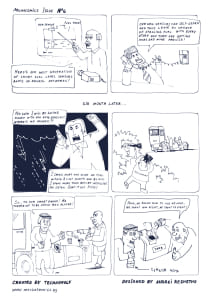The installation of fuel consumption meters on ships or yachts is an objective necessity to determine the cruising range, which strongly depends on the wave situation and cannot be accurately calculated from the data of the fuel level sensor in the tank, as well as to improve engine efficiencty based on the instantaneous fuel consumption of the engine. So we have to display instant fuel consumption data onboard, and it doesn’t mean extra display installation is required.
We can connect fuel meters to the onboard display, called also fishfinder, chartplotter or MFD (multifunctional display), using NMEA2000 interface.
On many ships and yachts, the NMEA2000 standard CAN bus is used for communication between displays and sensors. This standard is specifically designed for marine applications and allows easy plug-and-play connection of various devices. The protocol part of the standard is based on the J1939 “automotive” specification, but contains additional messages such as:
- latitude and longitude coordinates;
- the state of the navigation receiver;
- control commands for the autopilot;
- waypoints;
- wind sensor messages;
- telemetry from the engine;
- findfisher and echolocation data;
- and other specific data.
Also, in addition to the traditional data transfer in the form of standard PGN J1939 and the transport protocol of J1939, there is also Fast Packet data transfer, which is another way of transferring messages having more than 8 bytes length.
It is usually important for system integrators to know how to install a fuel flow sensor so that
1) NME2000 Dashboard (MFD, fishfinder) will supports fuel meter and display fuel data.
2) How to connect fuel meter to the GPS tracker at the same time.
To perform the first task, the fuel consumption meter must support the output of fuel consumption data according to the NMEA2000 specification. Eurosens fuel meter sends two identifiers: PGN 127489 (a package containing instant fuel consumption) and PGN 127497 (a package with a cumulative fuel volume consumed by engine).
Unlike J1939, products in the NMEA2000 network should “advertise” themselves, otherwise the on-board display will not know about their existence. One NMEA2000 display can show information from multiple engines. Therefore, the sensors must have in the settings not only the addresses in the NMEA2000 network, but also the number of the engine to which they refer.
An example of NMEA2000 display operation with two Eurosens fuel consumption sensors.
Also, the NMEA2000 standard also describes the types of connectors. NMEA2000 network can use 2 types of connectors, Micro and Mini. It is very easy to distinguish them:

The NMEA2000 network has the following structure, consisting of a backbone bus and devices connected to it with a help of T-connectors. There are termination plugs at both ends of the bus. The only difference from a car bus is that a new device must be connected by adding a T-connector.
Our Eurosens Direct CAN / Delta CAN fuel consumption meters support the NMEA2000 interface and we provide cables and T-connectors (type – Micro).
Using T-cables, we can connect a GPS tracker to the NMEA2000 network to read fuel consumption and other parameters. In this case, an extended configuration of CAN messages is required to read the identifiers PGN 127489 (message with instant fuel consumption) and PGN 127497 (a parcel with a cumulative fuel volume), which are “unusual” for CAN J1939 identifiers.
















We are in social media
Facebook
LinkedIn
Youtube